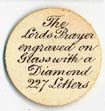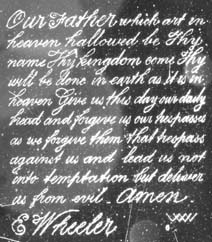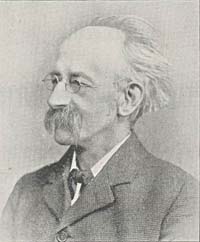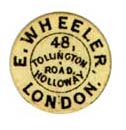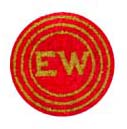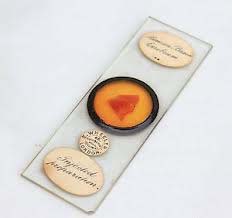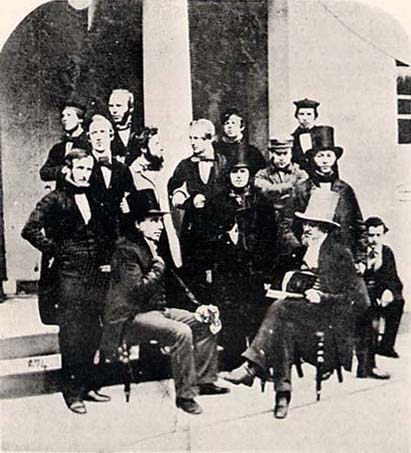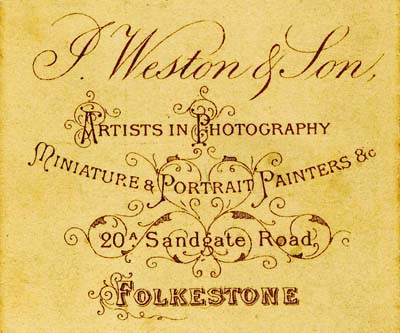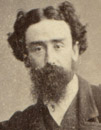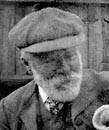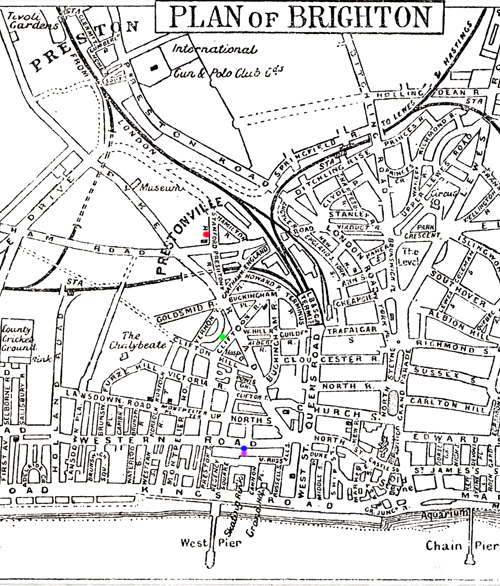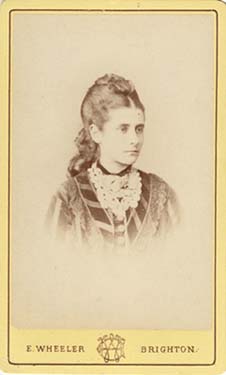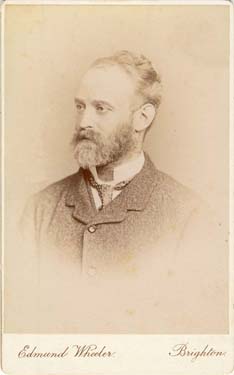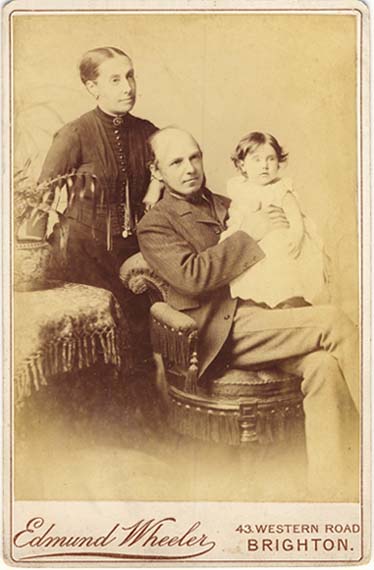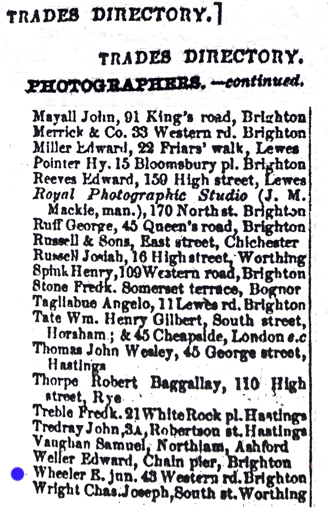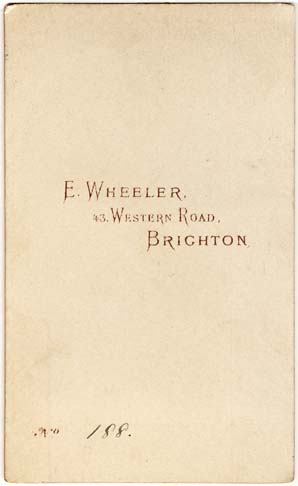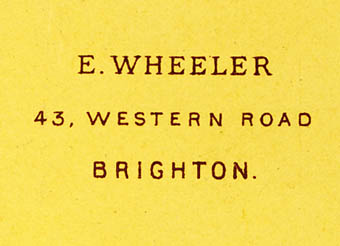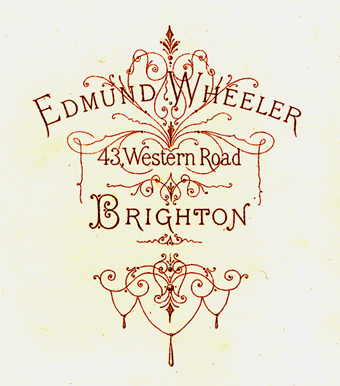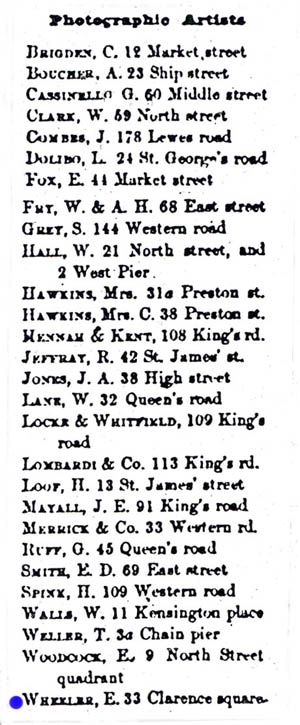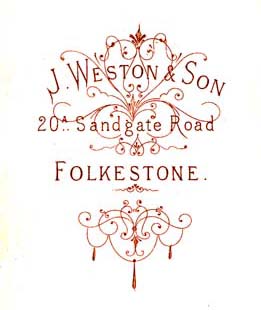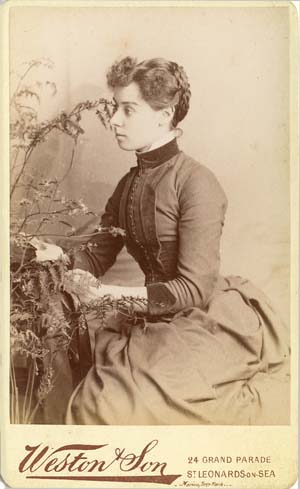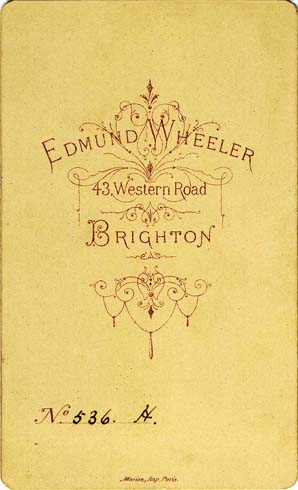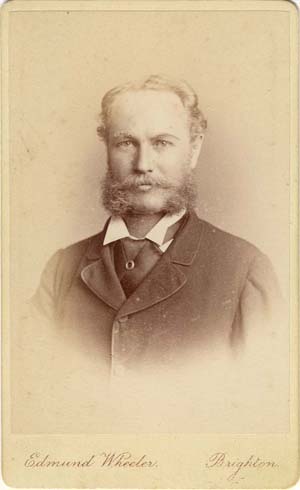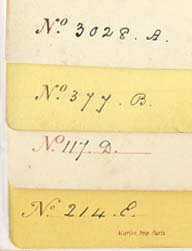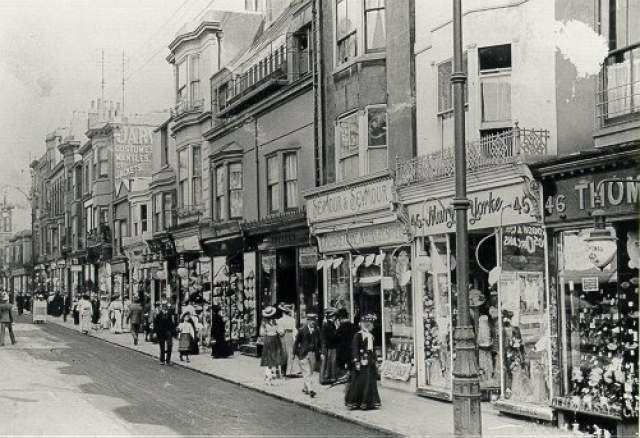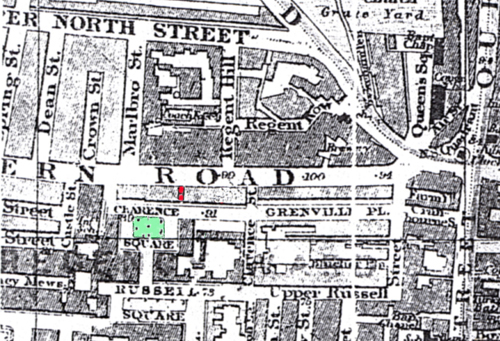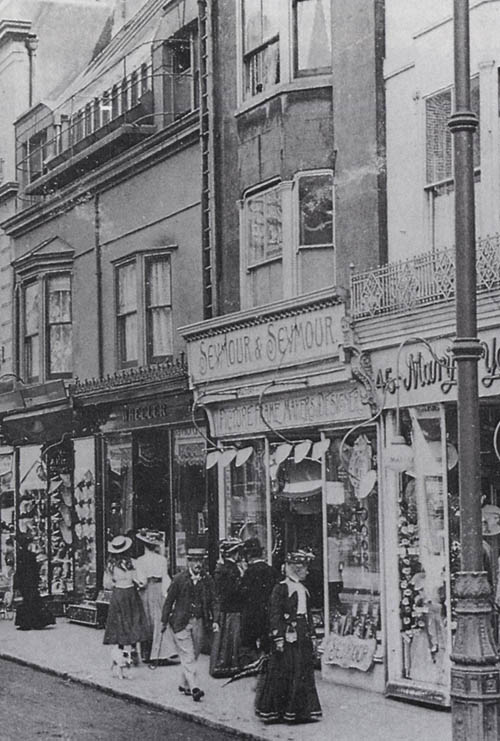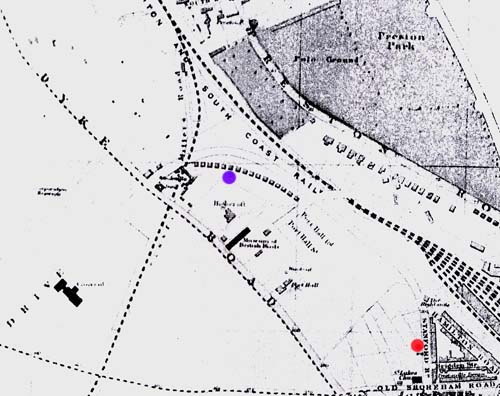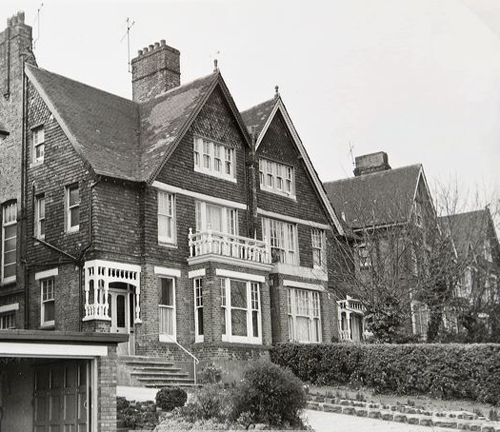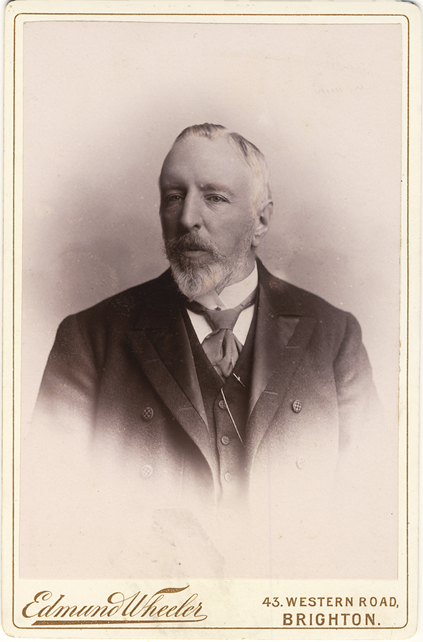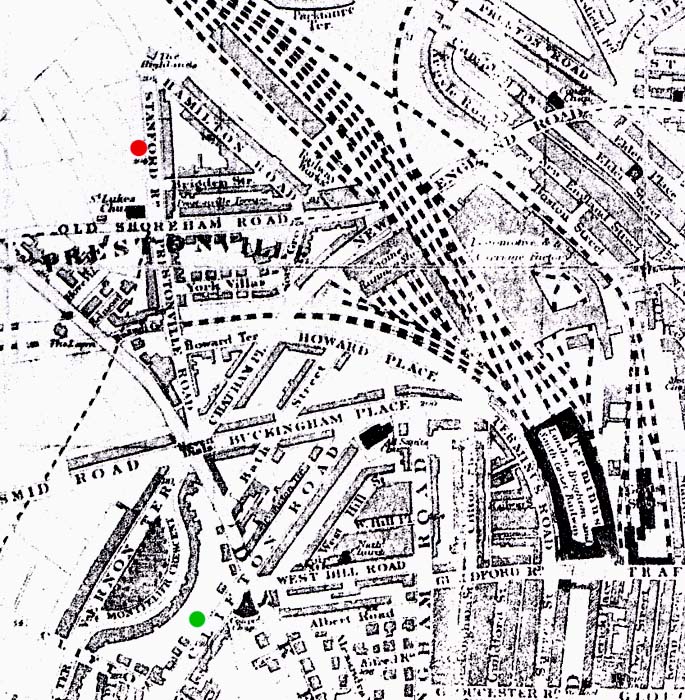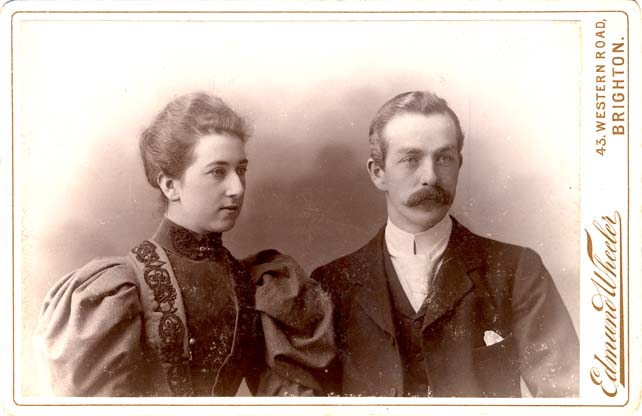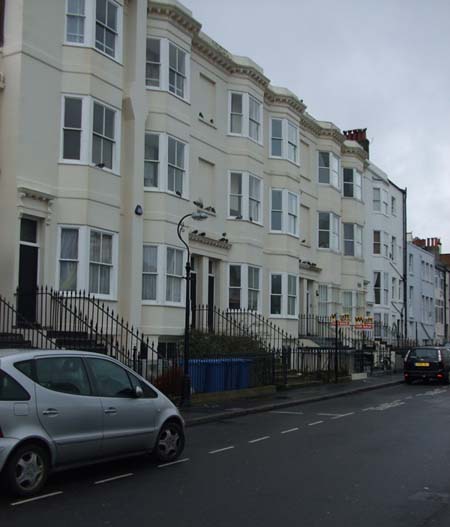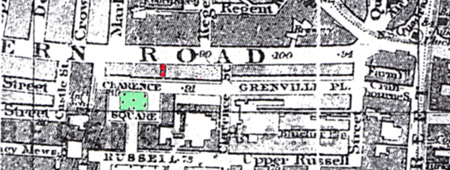Edmund Wheeler junior was born on 16th March,1836, at Dover, Kent, the son of Caroline Enock and Edmund Wheeler senior, then working as an ironmonger and gas fitter at 3 King Street, Dover.
Edmund Wheeler junior's Family
Edmund Wheeler senior (1808-1884), Edmund Wheeler's father, began his working life as an ironmonger, but in middle-age he was an admired scientific lecturer, a respected manufacturer of microscopes and a skilled preparer of microscopic slides. Edmund Wheeler senior was born in Kent at Strood, near Rochester, on 25th November 1808, the third of four sons born to Sarah Horsnaill and Samuel Wheeler (1775-1858), a grocer in Strood and a Member of The Religious Society of Friends (Quakers).
On 20th February 1833, at the Friends' Meeting House in Birmingham, Warwickshire, twenty-four year old Edmund Wheeler married Caroline Enock (born 1807, Shrewsbury, Shropshire), the daughter of Sarah and Robert Enock, a grocer of Shrewsbury. The Enocks, like the Wheelers were prominent Quakers.
After his marriage to Caroline, Edmund Wheeler senior set himself up as as an ironmonger and gas fitter in Dover, Kent. During their time in this coastal town, Caroline Enock and Edmund Wheeler produced at least four children - Sarah Ann (born 1834, Dover), Edmund Wheeler junior (born 1836, Dover), Sophia (born 1838, Dover) and Mary Caroline Wheeler (born 1840, Dover).
The 1841 census, records, Edmund Wheeler, his wife Caroline, and their four children - Sarah Ann (age 7), Edmund Wheeler junior (age 5), Sophia (age 3) and Mary (6 months) - residing in King Street, Dover. At this time, Edmund Wheeler gives his occupation as "Ironmonger" and the local trade directories and advertisements in the Dover Telegraph newspaper list him as an ironmonger and gas fitter at 3 King Street, Dover.
It appears that sometime after the 1841 census was taken, Edmund Wheeler senior decided to return to his home town of Strood, a settlement on the northern bank of the River Medway directly opposite the city of Rochester. It is possible that Mrs Caroline Wheeler, Edmund Wheeler senior's wife, was seriously ill and that she and her husband had moved to Strood to receive assistance and support from Edmund's family and the Quaker community in Rochester. There is evidence that Mrs Caroline Wheeler died in Strood, Kent, not long after the family's arrival in the town. [The death of a Caroline Wheeler was registered in the Kent district of North Aylesford, which embraces the town of Strood, during the 3rd Quarter of 1842].
After leaving Dover, Edmund Wheeler senior embarked on a new career as a teacher of "Natural Philosophy" (Science) and earned his living as a travelling Science lecturer. In 1847, Edmund Wheeler senior was elected as a member of the British Association for the Advancement of Science.( Edmind Wheeler senior was later to join the Microscopical Society of London and in 1861 he became a Fellow of the Royal Astronomical Society]. Around 1849, Edmund Wheeler senior moved to lodgings in Finsbury, North London. When the census was taken on 30th March 1851, Edmund Wheeler senior and his 15 year old son Edmund Wheeler junior were lodging at the boarding house of Mrs Jane Tofft at 2 North, Buildings, Finsbury Circus, London. On the census return, Edmund Wheeler senior, a forty-two year old widower, is described as a "Lecturer of Natural Philosophy". Fifteen year old Edmund Wheeler junior is recorded as a "Scholar at Home". Young Edmund Wheeler might have been receiving his education from a fellow boarder at No. 2 North Buildings, fifty-nine year old William Hughes, who gives his profession as "Private Tutor". At the time of the 1851 census, Edmund Wheeler's elder sister, sixteen year old Sarah Ann Wheeler was employed as a "Governess" and teacher, and was residing at 18 Waterloo Crescent, Dover, with her uncle, Lambert Weston (born 1805, Chatham, Kent), the proprietor and the Principal of a boarding school called Hofwy College at the village of River, near Dover, Kent. Edmund Wheeler's younger sister, 13 year old Sophia Wheeler, was a scholar attending The Friends' School in Park Lane, Croydon, Surrey. Established in Croydon in 1825, The Park Lane Friends' School was a Quaker boarding school for boys and girls which had been specially set up for the "Education of Children who are Members of the Religious Society of Friends and whose parents are not in affluent circumstances".
By 1851, Edmund Wheeler senior had established himself as a talented amateur scientist with an interest in physics, anatomy, physiology, botany, entomology, geology, and mineralogy. At the Great Exhibition of 1851, Edmund Wheeler of 2 North, Buildings, Finsbury Circus, London, had exhibited his own patented invention, a set of "Equilibrium slide valves for steam engines, to relieve the valve from the pressure due to the elastic force of the steam". During a period of over 30 years, from 1850 until 1882, Edmund Wheeler senior took on the role of a "travelling scientific lecturer" visiting schools and scientific institutions across the country. Edmund Wheeler senior was a frequent guest lecturer at the Ackworth School, a Quaker boarding school in Pontefract, West Yorkshire. Wheeler also visited other schools associated with The Religious Society of Friends, such as Polam Hall School, Darlington, County Durham, a Quaker boarding for Girls. Edmund Wheeler senior delivered lectures on a wide range of scientific and technological subjects, conducting simple experiments for the benefit of school children and presenting papers to learned societies. In 1866, Edmund Wheeler senior, billed as "Edmund Wheeler F.R.A.S. of London" delivered a lecture on "Ocean Telegraphy" to the Saffron Walden Literary and Scientific Institution at the town library in Saffron Walden, Essex. It is reported that Edmund Wheeler senior, in his role as a "travelling lecturer", also delivered talks on astronomy, physics, modern (Victorian) technology and, in his practical experiments, demonstrated the power of electricity.
At the time of the 1861 census, Edmund Wheeler senior was residing at 11 William Street, Islington, London, with his three surviving children. Edmund Wheeler senior is described on the census return as a fifty-two year old "Teacher of Science". Edmund's eldest daughter, twenty-six year old Sarah Ann Wheeler gives her occupation as "Proprietor of Houses", Edmund Wheeler junior, then aged 25, is recorded as a "Working Optician". No employment or occupation is given for Edmund's youngest daughter, 23 year old Sophia Wheeler. On 17th August 1863, Sarah Ann Wheeler, Edmund Wheeler's eldest daughter, died at the family home in North London at the early age of 29.
Sometime in the early 1860s, Edmund Wheeler senior established a business at 48 Tollington Road, Holloway, North London, where he sold microscopes, telescopes, pocket lenses and a large range of "microscopic objects" (specially prepared slides containing materials which could be viewed through a microscope). By 1864, Edmund Wheeler senior's trade in microscopes and "microscopic objects" was flourishing. An advertisement published in The Quarterly Journal of Science in 1867, refers to "1,000 Varieties (of microscopic slides), illustrating every Department of Natural Science which were "prepared and sold by Edmund Wheeler, 48, Tollington Road, Holloway, London". In 1880, Edmund Wheeler senior published a trade catalogue which listed "3,000 varieties of microscopic objects ... of the highest attainable perfection". Edmund Wheeler senior was noted for the high quality of his microscopic preparations and has been described as "one of the most famous microscope slide makers of the Victorian era",
Edmund Wheeler senior was in business as a manufacturer of microscopes, telescopes and binocular glasses and as a preparer of microscopic slides for a period of 18 years. Contemporary sources report that during the 1860s Edmund Wheeler senior was assisted in his business by his children Sarah Ann, Sophia and Edmund Wheeler junior. A report in the Transactions of the Microscopical Society of London, published in 1864, noted that Edmund Wheeler senior's slides were "prepared and mounted by himself and the other members of his own family, his sons (sic) and his daughters".
By 1871, Edmund Wheeler's two surviving children had left the family home in Holloway. Edmund Wheeler junior, together with his younger sister Sophia Wheeler, had moved from North London to Brighton, where Edmund junior hoped to establish himself as a portrait photographer. When the census was taken on 2nd April 1871, Edmund Wheeler senior was living at his business premises at 48 Tollington Road, Holloway, North London. Edmund Wheeler senior was now assisted in his business by his nephew, Frederic Enock (born 1845, Manchester). Both Edmund Wheeler senior and Frederic Enock give their profession on the 1871 census return as "Naturalist". [Fred Enock (1845-1911) went on to become a respected entomologist, becoming a Fellow of the Entomological Society in 1876. Enock gave public lectures on subjects such as "Insect Intelligence" and wrote detailed studies of the life histories of flies, spiders and wasps. Today, Fred Enock is well-known for his exact microscopic drawings of insects].
At the Paris Universal Exhibition, held in 1878, Edmund Wheeler senior exhibited a selection of his "microscopic objects" for which he was awarded a "Prize Medal for Excellence and Variety". By this date, Edmund Wheeler senior was regarded as the leading London retailer of prepared microscopic slides.
|
||||||
When the census was carried out on 3rd April 1881, Edmund Wheeler senior was visiting Polam Hall School, Darlington, County Durham in his capacity as a travelling lecturer. On the census return, Edmund Wheeler senior, who was now in his early seventies, is described as a "Public Lecturer".
In 1884, Edmund Wheeler senior sold his microscope and microscopic slide business to the firm of W. Watson & Sons and retired to Brighton to live with his son Edmund Wheeler junior, who now was an established portrait photographer in Brighton's Western Road. Science journals reported that Edmund Wheeler senior was obliged to retire from business through continued ill-health. Towards the end of 1884 within months of his arrival in Brighton, Edmund Wheeler senior died at the age of 76. [Death registered in the district of Brighton during the 4th Quarter of 1884].
|
|
|
[ABOVE] The trade plate of the Brighton photographer Edmund Wheeler junior (1836-1930), the only son of the microscopist and scientific lecturer Edmund Wheeler senior (1808-1884). |
Edmund Wheeler junior (1836-1930) - Early Career
Edmund Wheeler junior attended a Quaker boarding school The Friends' School in Park Lane, Croydon, Surrey, between 1845 and 1851. When the 1851 census was taken, fifteen year old Edmund Wheeler junior was residing with his widowed father at 2 North, Buildings, Finsbury Circus, London. On the 1851 census return, Edmund Wheeler junior is described as a "Scholar at Home", but, according to the records of The Religious Society of Friends in Rochester, as a teenager, Edmund junior served as an apprentice in Strood, Kent. When the census was taken a decade later on 7th April 1861, twenty-five year old Edmund Wheeler junior is recorded as a "Working Optician", so it is likely that he trained as an optician when he was in his teens. Interestingly, Edmund Wheeler's father is sometimes listed as an optician in London trade directories and, in the early 1850s, when Edmund Wheeler and his son were lodging at 2 North, Buildings, Finsbury, their residence was in short walking distance from the Royal London Ophthalmic Hospital (later re-named Moorfields Eye Hospital), which was situated in City Road, Finsbury.
In addition to working as an optician, it appears that, from around 1864, Edmund Wheeler junior assisted his father at Wheeler's workshop in Tollington Road, Holloway, assisting in the assembly of microscopes and telescopes and the preparation of microscopic slides.
Edmund Wheeler junior and Photography
The Wheeler Family had close and strong links with the Weston Family, who had turned from teaching to professional photography during the early 1860s. Edmund Wheeler junior was the nephew of Jasper Weston (1810-1878), who had opened a photographic portrait studio in Folkestone and Lambert Weston (1805--1895), who, with his son Sidney Cooper Weston (born 1842, Ashford, Kent), had established two photographic portrait studios, one in Dover, the other in Folkestone. By 1867, Lambert Weston & Son had opened a new photographic studio at 23 Sandgate Road, Folkestone. Meanwhile, Jasper Weston and his son Frederick Jasper Weston had set up another studio at 20A Sandgate Road, Folkestone under the name of J. Weston & Son.
The Wheeler and Weston families were related to each other and these family ties were later to be strengthened through marriage. When the 1851 census was taken, Edmund junior's eldest sister Sarah Ann Wheeler, a sixteen year old "Governess", was living with her uncle and aunt, Lambert Weston and Mrs Anna Maria Weston (Greenwood) at 18 Waterloo Crescent, Dover. Edmund junior's youngest sister, Sophia Wheeler, was especially close to her cousin Emily Maria Eliza Weston (born 1845, River, near Dover), the second eldest daughter of Jasper Weston and his wife Maria Jane Saunders. After the death of her mother, Mrs Maria Jane Weston, in 1869, Emily Weston and Sophia Wheeler became close companions, and when Edmund Wheeler junior made the decision to move to Brighton to take over a photographic portrait studio at 43 Western Road, Brighton, his sister Sophia and his cousin Emily Weston went with him. [ In 1871, at Brighton, Edmund Wheeler junior married his cousin Emily Maria Eliza Weston, while her younger sister Edith Jane Weston (born 1848, River, near Dover) married her cousin, the photographer Sidney Cooper Weston (born 1842, Ashford, Kent) in Christ Church, Folkestone, Kent ].
| Edmund Wheeler senior, F. R. A. S. : Amateur Scientist and Travelling Lecturer | |
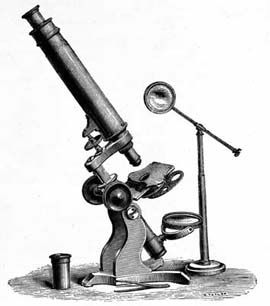 |
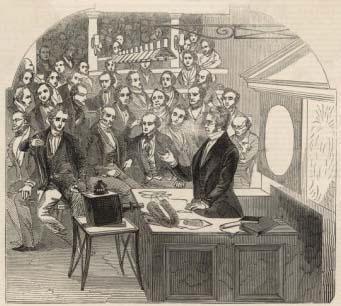 |
|
[ABOVE] A Victorian brass microscope. Edmund Wheeler senior was a keen amateur scientist with a particular interest in microscopy. In 1847, Edmund Wheeler senior was elected as a member of the British Association for the Advancement of Science. |
[ABOVE] A scientific lecture delivered by Michael Faraday in the mid-19th century. Edmund Wheeler senior was a "travelling scientific lecturer". Between 1849 and 1882, Wheeler spent much of his time travelling around the country giving scientific lectures. He paid frequent visits to Ackworth School (a noted boarding school for Quakers) to deliver scientific lectures. |
| Edmund Wheeler senior's Business in Microscopes, Pocket Lenses and Microscopic Slides at 48 Tollington Road, Holloway, London. | ||
|
|
|
|
| [ABOVE] Edmund Wheeler senior's trade labels which appeared on his paper covers and microscopic glass slides [ See photo, RIGHT] | ||
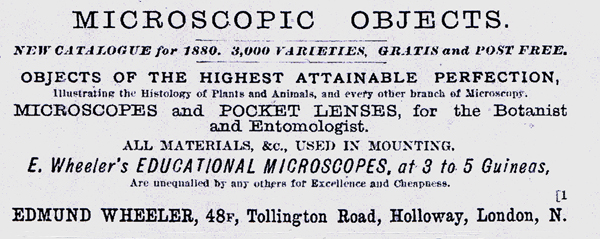
[ABOVE] An advertisement for Edmund Wheeler senior's "Microscopic Objects, Microscopes and Pocket Lenses" published in 1880. Edmund Wheeler senior opened his establishment at 48 Tollington Road, Holloway, London around 1864 and was based at this address for the next 20 years. Edmund Wheeler senior sold his business in 1884
|
Edmund Wheeler senior and The Quakers
* |
|
|||||||||||||||||||

